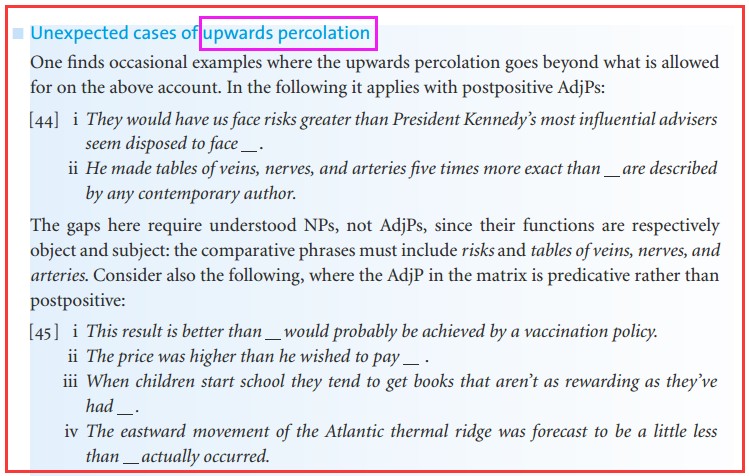没想到大家对这个问题有兴趣,买椟还珠!从历史的角度就能理解这个问题。其实两种说法都对,大家可以搜索一下这本剑桥语法,两种写法都有。用upwards percolation就是副词修饰名词(某些地点副词修饰名词置于名词前),当然,副词后置于名词的要多见一些(five dollars (and) upwards)。
我个人认为极大可能是早期英语的残留,对不对反正就这么用了,遗留至今。比如现在还在用的in an upwards direction这个短语,你可以说是把副词当形容词在用,这找谁说理去?
在Heaton的著作“Overseas students companion to English studies”第333页这样写道:
Originally the suffix ward seems to have been common when the word to which it was added was used
adjectivally: thus a sideward movement, a downward glance; wards is commonly used adverbially: thus to move sidewards (sideways is more usual), to glance downwards.
However, most English writers rarely distinguish between the two nowadays, and it is correct to write either an upward direction or an upwards direction, travel southwards or travel southward.
在“Collins COBUILD English Usage2019第4版”中有这样一段话:
12 modifier use
Some place adverbs can be used in front of nouns as modifiers.
Gradually the underground caverns fill up with deposits.
There will be some variations in your heart rate as you encounter uphill stretches or increase your pace on downhill sections.
也许有人会说这里的underground和uphill,downhill都是形容词(见朗文高阶第五版),怎么是副词呢?原因也很简单,如果你手上有比较早期的词典,比如Hornby编写的牛津当代第三版1974年的,当时的downhill就只有副词这一个类别。这也为语言的演变提供了一个证据,也正因为如此,当代的词典就把作形容词的类别加上了。我们用当代的眼光去看待过往,一定会出现很多看似奇怪其实也并不特别的问题。
用upward percolation形容词修饰名词,更符合当代的语法认知。








